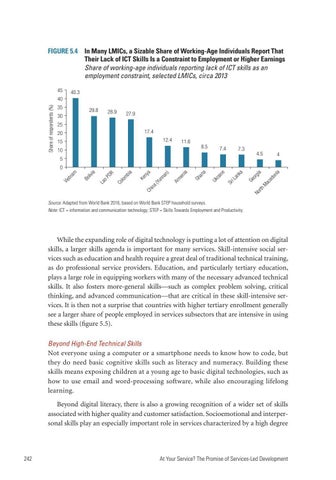FIGURE 5.4 In Many LMICs, a Sizable Share of Working-Age Individuals Report That Their Lack of ICT Skills Is a Constraint to Employment or Higher Earnings Share of working-age individuals reporting lack of ICT skills as an employment constraint, selected LMICs, circa 2013 45
40.3
Share of respondents (%)
40 35
29.8
30
28.9
27.9
25 17.4
20
12.4
15
11.6
8.5
10
7.4
7.3
4.5
5
4
nia
ia
do
org No
Ch
rth
Ma
ce
Ge
ka
ne
an iL Sr
rai Uk
a an Gh
nia me
) an nn (Yu
ina
Ar
ny a Ke
bia
DR
lom Co
oP La
ia liv Bo
Vie
tna
m
0
Source: Adapted from World Bank 2016, based on World Bank STEP household surveys. Note: ICT = information and communication technology; STEP = Skills Towards Employment and Productivity.
While the expanding role of digital technology is putting a lot of attention on digital skills, a larger skills agenda is important for many services. Skill-intensive social services such as education and health require a great deal of traditional technical training, as do professional service providers. Education, and particularly tertiary education, plays a large role in equipping workers with many of the necessary advanced technical skills. It also fosters more-general skills—such as complex problem solving, critical thinking, and advanced communication—that are critical in these skill-intensive services. It is then not a surprise that countries with higher tertiary enrollment generally see a larger share of people employed in services subsectors that are intensive in using these skills (figure 5.5). Beyond High-End Technical Skills Not everyone using a computer or a smartphone needs to know how to code, but they do need basic cognitive skills such as literacy and numeracy. Building these skills means exposing children at a young age to basic digital technologies, such as how to use email and word-processing software, while also encouraging lifelong learning. Beyond digital literacy, there is also a growing recognition of a wider set of skills associated with higher quality and customer satisfaction. Socioemotional and interpersonal skills play an especially important role in services characterized by a high degree
242
At Your Service? The Promise of Services-Led Development

